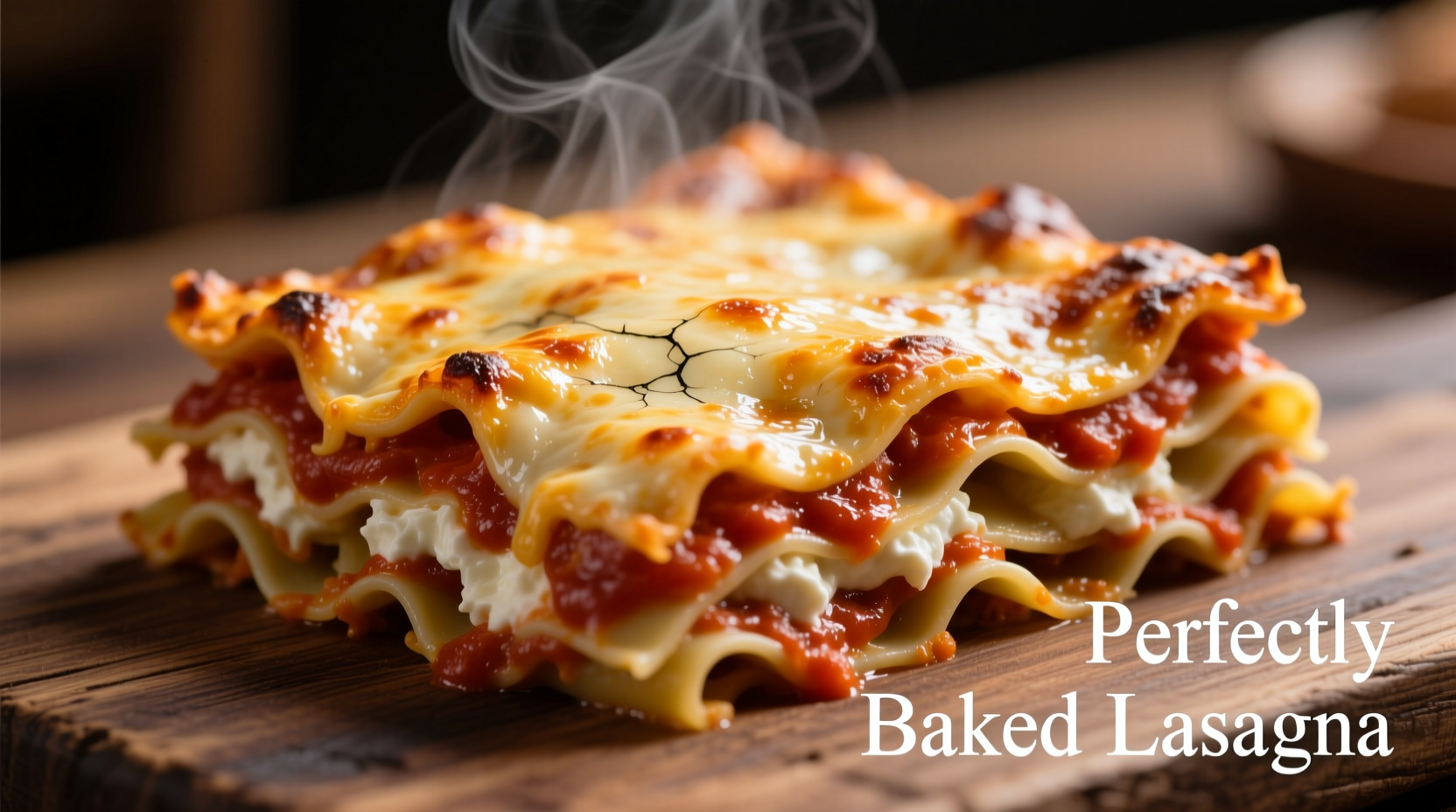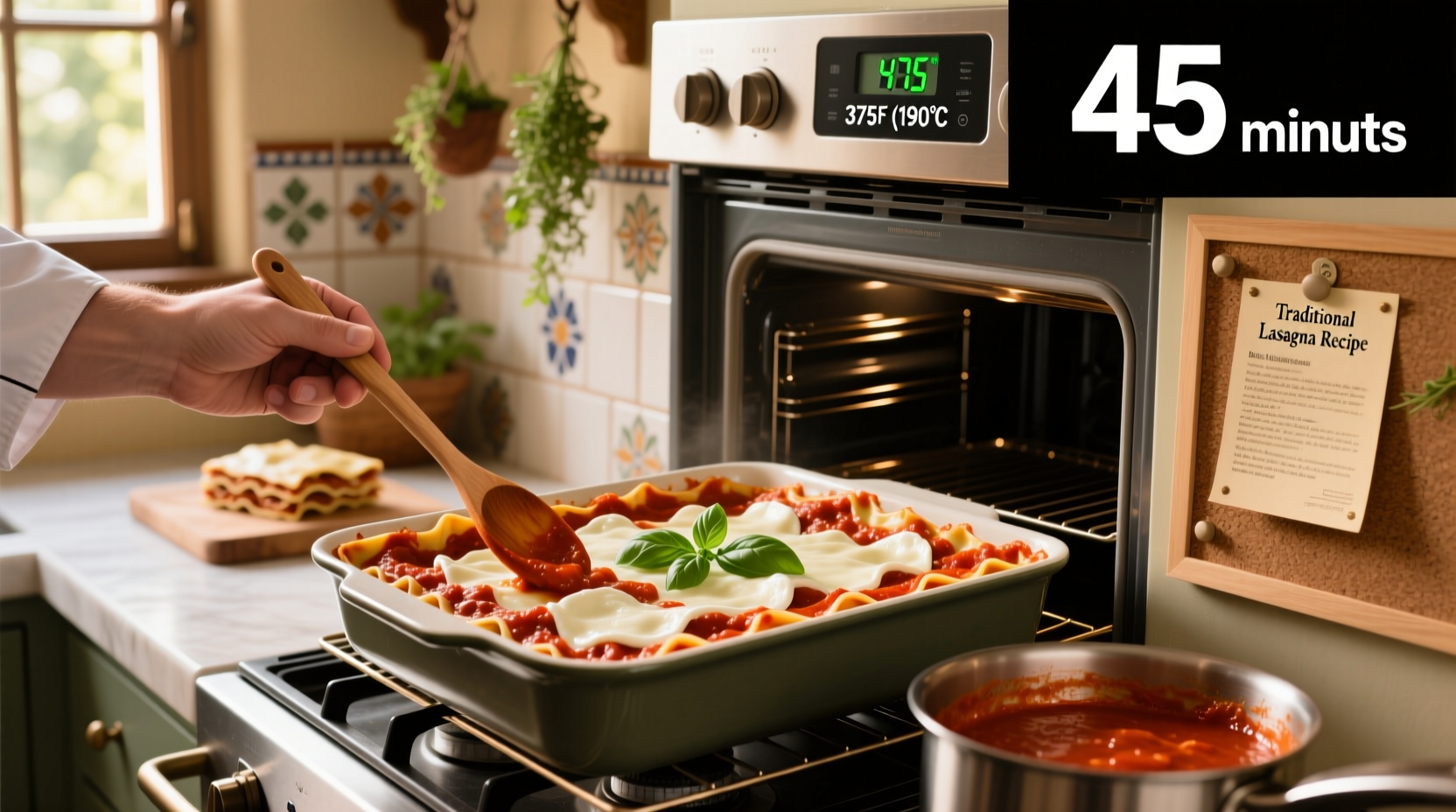Lasagna typically cooks for 45-60 minutes at 375°F (190°C), but the exact time depends on your recipe, oven temperature, and whether you're using fresh or frozen ingredients. The internal temperature should reach 165°F (74°C) for food safety, and the edges should bubble while the cheese turns golden brown.
Nothing beats the comforting aroma of lasagna baking in the oven, but getting the timing right makes all the difference between a perfectly layered masterpiece and a soupy disaster. Whether you're preparing a classic meat lasagna or a vegetarian version, understanding the precise cooking requirements ensures your dish emerges with crisp edges, melted cheese, and perfectly cooked pasta layers. This guide delivers exact timing specifications backed by culinary science, plus practical indicators that tell you precisely when your lasagna has reached perfection.
Factors That Determine Lasagna Cooking Time
Your lasagna's cooking duration isn't one-size-fits-all. Several critical variables affect how long your dish needs in the oven:
- Oven temperature - Most recipes call for 350°F to 375°F (175°C to 190°C), with higher temperatures reducing cooking time
- Lasagna depth - Deeper dishes require longer cooking to heat through completely
- Ingredient temperature - Cold ingredients from the refrigerator extend cooking time by 10-15 minutes
- Pasta type - No-boil noodles need more liquid and slightly longer baking than pre-cooked noodles
- Covering method - Foil-covered lasagnas cook faster initially but need uncovered time for browning
Step-by-Step Cooking Timeline
Follow this professional kitchen-tested sequence for flawless results every time:
Preparation Phase (15 minutes)
Assemble your lasagna in an oven-safe dish, alternating sauce, cheese, and pasta layers. For best results, finish with a generous layer of mozzarella and Parmesan cheese on top. Cover tightly with aluminum foil, tenting it slightly to prevent cheese from sticking.
Initial Baking (30-40 minutes)
Bake covered at 375°F (190°C). This steaming phase cooks the pasta layers through without drying out the top. The USDA Food Safety and Inspection Service recommends maintaining proper internal temperatures to prevent foodborne illness, especially important for meat-containing lasagnas1.
| Oven Temperature | Covered Time | Uncovered Time | Total Time |
|---|---|---|---|
| 350°F (175°C) | 35-45 minutes | 10-15 minutes | 45-60 minutes |
| 375°F (190°C) | 30-40 minutes | 8-12 minutes | 38-52 minutes |
| 400°F (205°C) | 25-35 minutes | 5-10 minutes | 30-45 minutes |
| Convection Oven | Reduce by 25-30% | Reduce by 25-30% | Reduce by 25-30% |
Final Browning (8-15 minutes)
Remove the foil and return to the oven until the cheese becomes golden and bubbly. This Maillard reaction creates complex flavor compounds that transform your lasagna from merely cooked to truly delicious. According to research from the Culinary Institute of America, this final browning phase develops critical flavor compounds that significantly enhance the overall taste profile2.
Essential Resting Period (15-20 minutes)
Resist the temptation to cut immediately! Let your lasagna rest covered with a kitchen towel. This crucial step allows the layers to set, preventing collapse when sliced. Food science demonstrates that resting enables starches to fully gelatinize and proteins to relax, creating cleaner slices3.

How to Tell When Lasagna Is Done
Don't rely solely on the timer—use these visual and physical indicators to confirm doneness:
- Internal temperature - Insert a food thermometer into the center; it should read 165°F (74°C)
- Bubbling edges - Sauce should be actively bubbling around the pan's perimeter
- Firm texture - Gently shake the pan; the center should jiggle slightly but hold its shape
- Golden cheese - Top layer should be evenly golden with some browned spots
- Steam test - When pierced with a knife, steam should escape consistently
Avoiding Common Timing Mistakes
Even experienced cooks make these timing errors that compromise results:
- Skipping the rest period - Cutting too soon causes structural collapse and soupy texture
- Overbaking for crispness - Extended uncovered time dries out cheese and edges
- Ignoring oven variations - Home ovens often run 25°F hotter or cooler than set temperature
- Using cold dishes - Glass or ceramic dishes straight from the fridge add 10-15 minutes to cooking time
For frozen lasagnas, add 20-30 minutes to the covered cooking time. Never thaw before baking, as this creates excess moisture that makes layers soggy. The Food Network's test kitchen confirms that baking frozen lasagna directly yields better texture than thawing first4.
Perfect Timing for Special Variations
Different lasagna styles require specific timing adjustments:
- Vegetable lasagna - Reduce time by 5-8 minutes as vegetables release moisture during baking
- Meat lasagna - Ensure ground meat reaches 160°F (71°C) before assembling for food safety
- No-boil noodle versions - Add 5-10 minutes covered time to ensure noodles fully hydrate
- Individual portions - Reduce time by 15-20% since heat penetrates smaller volumes faster
Remember that oven calibration varies significantly between models. An independent study by Consumer Reports found that 68% of home ovens have temperature variations exceeding 25°F from the set point, dramatically affecting cooking times5
Final Timing Checklist Before Serving
Before you remove your lasagna from the oven, verify these five critical indicators:
- Internal temperature reaches 165°F (74°C) at the center
- Sauce bubbles consistently around the edges
- Cheese topping is uniformly golden with browned spots
- Center holds shape when gently shaken (minimal jiggle)
- Steam rises consistently when pierced with a knife
Mastering lasagna timing transforms this classic dish from a weeknight meal into a showstopper. By understanding the science behind the process and watching for these precise indicators, you'll consistently produce restaurant-quality results that impress family and guests alike. Remember that perfect lasagna requires patience—the resting period is just as crucial as the baking time for achieving clean slices and balanced flavors.
How long should I bake lasagna at 350 degrees?
Bake covered lasagna for 35-45 minutes at 350°F (175°C), then uncover and bake 10-15 minutes more until the cheese topping turns golden brown. Total cooking time should be 45-60 minutes, with the internal temperature reaching 165°F (74°C) for food safety.
Why is my lasagna still watery after baking?
Watery lasagna usually results from insufficient resting time, excess moisture in ingredients, or undercooked noodles. Always let lasagna rest 15-20 minutes after baking to allow layers to set. Pre-cook watery vegetables like zucchini, and ensure sauce has reduced properly before assembly.
Can I overcook lasagna?
Yes, overcooking lasagna causes dry, crumbly texture and separated layers. The cheese topping will become overly browned or burnt, while the pasta edges may crisp and break when sliced. Watch for bubbling edges and golden cheese as primary visual indicators to prevent overcooking.
How do I know when no-boil lasagna noodles are done?
No-boil lasagna noodles are done when they become tender and flexible throughout the dish. Check by inserting a knife into the center—it should meet slight resistance but slide in easily. The internal temperature should reach 165°F (74°C), and the edges should be bubbling consistently.
Should I cover lasagna with foil while baking?
Yes, cover lasagna with foil for the first 75% of baking time to prevent excessive moisture loss and uneven cooking. Remove the foil during the final 10-15 minutes to allow the cheese topping to brown properly. Tent the foil slightly to prevent melted cheese from sticking to it.











 浙公网安备
33010002000092号
浙公网安备
33010002000092号 浙B2-20120091-4
浙B2-20120091-4